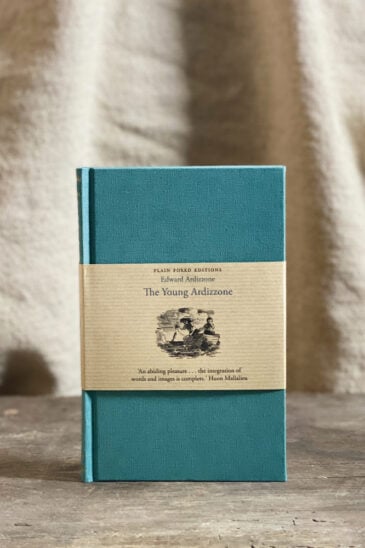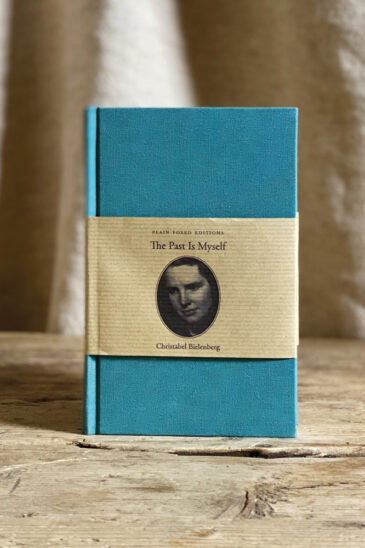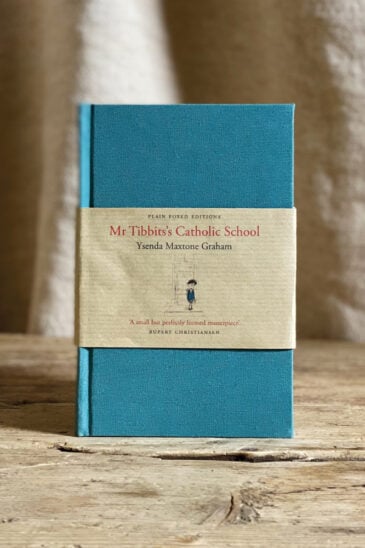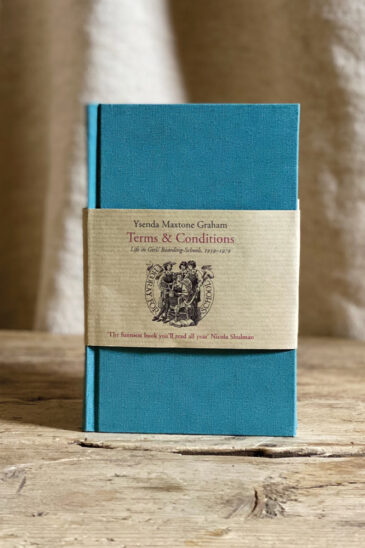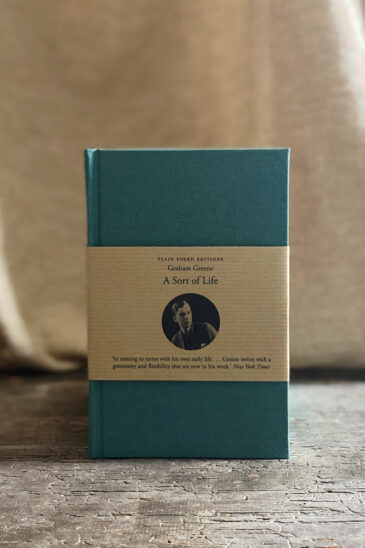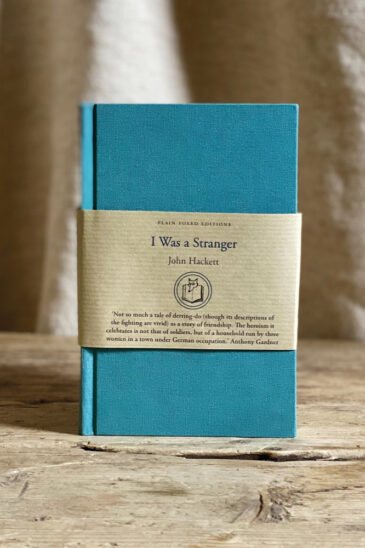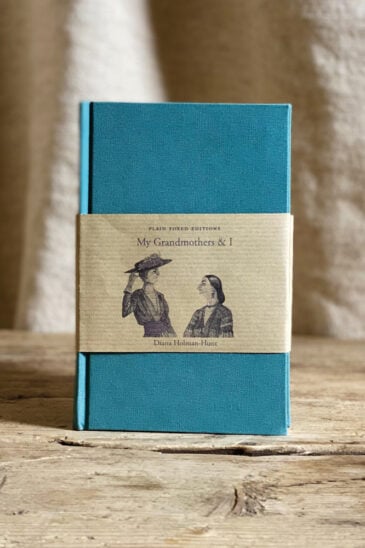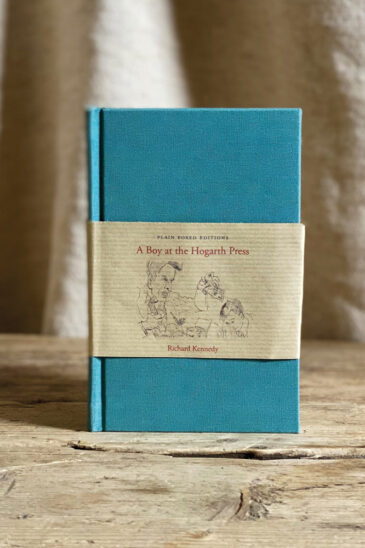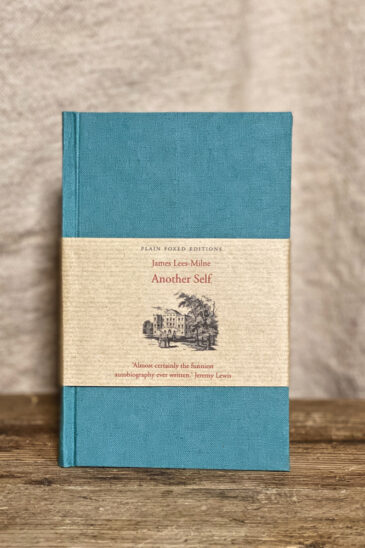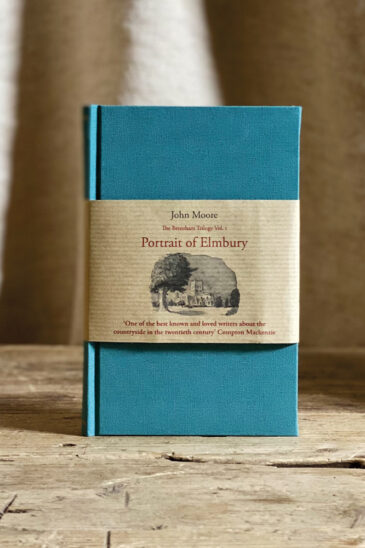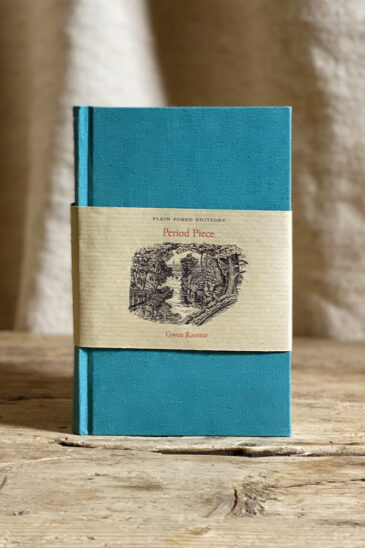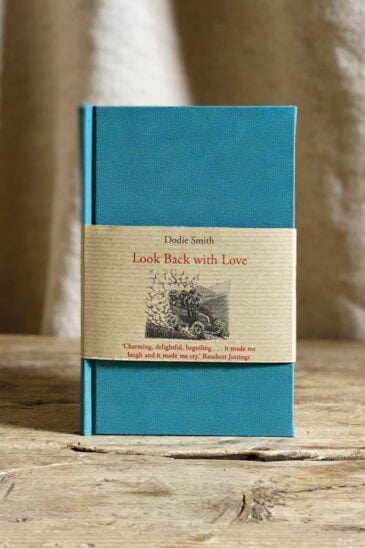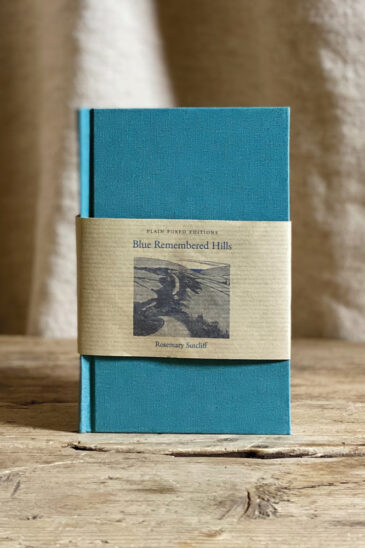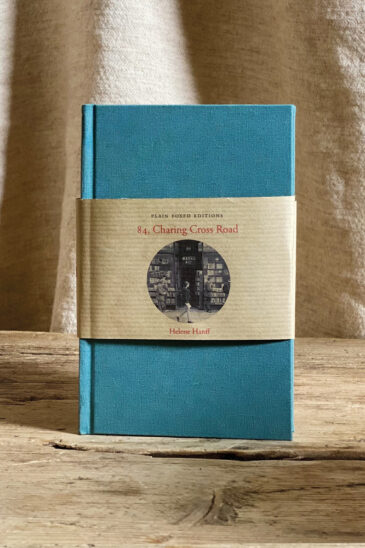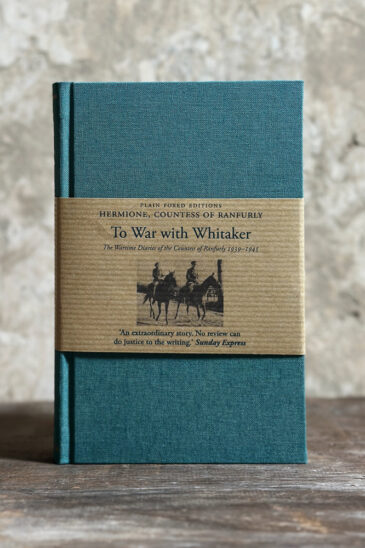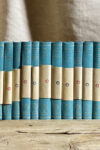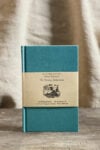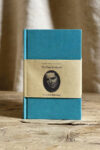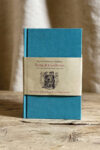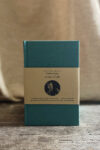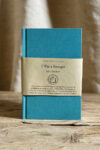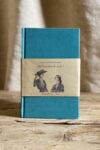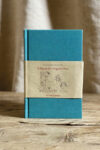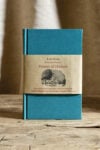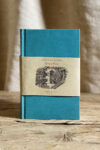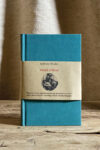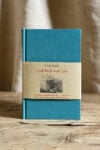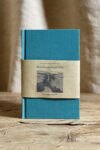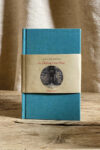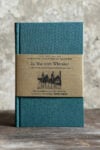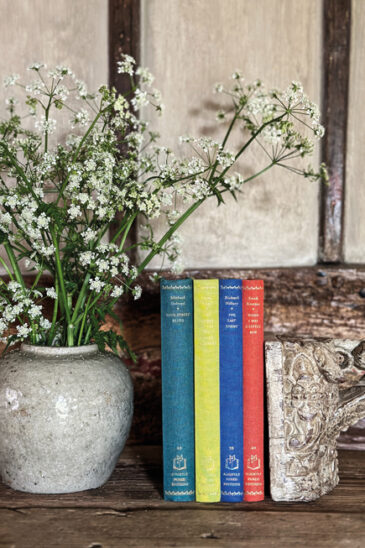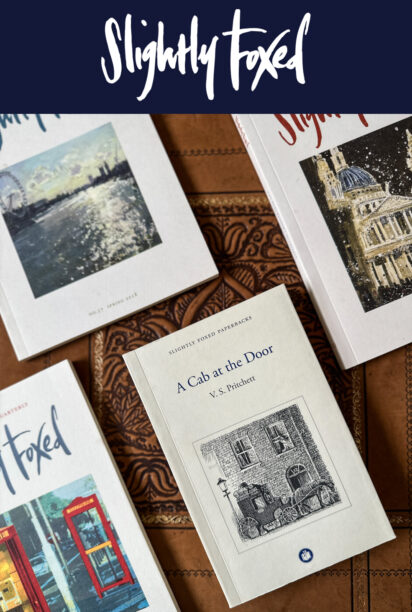Bound in duck-egg blue cloth, with a silk ribbon marker, the Plain Foxed Editions come in the same neat pocket format as the original SF Editions and will happily fill any gaps in your collection, as well as forming a delightful uniform series of their own.
Catch up with a set of eighteen of our available Plain Foxed Editions. This literary bundle includes:
Edward Ardizzone, The Young Ardizzone
The creator of the ever-popular Little Tim and Lucy books begins his story in 1905 when he was 5 and his mother brought him and his two sisters home to England from Haiphong where his father was a telegraph engineer. Left in Suffolk in the care of their grandmother, the three grew up with a full complement of young bachelor uncles, great-aunts and eccentric family friends – a comfortable Edwardian world which is beautifully captured in Ardizzone’s deceptively simple prose and delicately humorous drawings.
Adrian Bell, Corduroy
Adrian Bell was a rather frail young man of 20 when, in 1920, he left London to learn agriculture on a Suffolk farm. He arrived one autumn day on an old motorbike feeling all wrong for the part. Like many townies, he assumed at first that the locals were somewhat simple, but soon his own ignorance and initial inability to do the most basic physical tasks taught him a new respect. A farmer, he discovered, stored away in his head thousands of facts about animals, crops and fodder, while his eye for a pig was ‘as subtle as an artist’s’. Bell’s eye was subtle too. He grew to love the land, and Corduroy is filled with precise and poetic descriptions of the countryside and of farming life. It is not simply a period piece – it captures what is unchanging about the lives of those who live from, rather than simply on, the land.
Christabel Bielenberg, The Past is Myself
Christabel and Peter Bielenberg, a young lawyer from a liberal Hamburg background, met there while she was studying singing and married in 1934, not long after Hitler’s rise to power. In 1939, the couple moved from Hamburg to Berlin, but when Allied bombing made the city too dangerous, Christabel fled to the country with their three small sons. Her picture of wartime life in the remote German countryside still comes as a surprise. In the cities food supplies dried up, friends betrayed friends and speaking out was always dangerous. But in the village of Rohrbach there was little sympathy for the Nazi party, nobody starved, people looked after one another, and Christabel and her family were warmly accepted into village life. Christabel herself said that she wrote The Past Is Myself out of a sense of duty – to let the world know that there had been another Germany and that being a German was not the same as being a Nazi. As well as telling a moving and romantic personal story, it’s a book that casts an unexpected light on the wartime behaviour of many ordinary Germans and on life under the Third Reich.
Ysenda Maxtone Graham, Mr Tibbits’s Catholic School
Like many of the best books, this unusual history of an unusual school – St Philip’s prepschool in Kensington, founded in 1934 by Catholic convert Richard Tibbits and still going strong today – is hard to classify. ‘As you live through its story,’ the author promises her readers, ‘you’ll be taken on a meander through the 20th century. War, rationing, smog, mini-skirts, strikes, Thatcherism, the first computer . . .’ Enough to say that for anyone who has enjoyed Decline and Fall or St Trinian’s, anyone who loves to laugh yet feels the poignancy of the passage of time, this book will be a treat.
Ysenda Maxtone Graham, Terms & Conditions
‘When I asked some girls who had been at Hatherop Castle in the 1960s whether the school had had a lab in those days they gave me a blank look. “A laboratory?” I expanded, hoping to jog their memories. “Oh that kind of lab!” one of them said. “I thought you meant a Labrador.”’ As we discover from this quietly hilarious history of life in British girls’ boarding-schools, this was a not untypical reaction. Harsh matrons, freezing dormitories and appalling food predominated, but occasionally these eccentric establishments imbued in their pupils a lifetime love of the arts and a thirst for self-education. In Terms & Conditions Ysenda speaks to members of a lost tribe – the Boarding-school Women, who look back on their experiences with a mixture of horror and humour.
Graham Greene, A Sort of Life
Graham Greene said that writing this memoir of his early years ‘was in the nature of a psychoanalysis. I made a long journey through time and I was one of my characters.’ Certainly the younger self that emerges is as complex and intriguing as any of those he created in his novels. A Sort of Life takes him through Oxford, early married life and conversion to Catholicism, to the point where, against all advice, he gives up his safe job on The Times in order to write. This extraordinary memoir is, to quote Frances Donnelly’s introduction, ‘an act of great intimacy’, taking us through all the false starts and griefs that fired the engine of Greene’s desire to write, and laying out the issues and themes which would dominate his later great novels.
John Hackett, I Was a Stranger
In September 1944 John Hackett, commander of the 4th Parachute Brigade, was severely wounded and captured during the Battle of Arnhem. After being taken to a hospital in enemy hands and given emergency surgery, he was spirited away by the Dutch Resistance and hidden in a house owned by three middle-aged sisters, who risked their lives to nurse him back to health and help him escape down the canals of occupied Holland to the British lines. I Was a Stranger is less a war memoir than a story of friendship, a tribute by a very unusual soldier to a group of outstandingly brave, unassuming and resourceful people.
Diana Holman-Hunt, My Grandmothers and I
Diana Holman-Hunt spent her Edwardian childhood shuttling between two wildly contrasting grandparents. Her paternal grandmother, the eccentric widow of the Pre-Raphaelite painter Holman Hunt, lived entirely in the past in her big gaunt house in Kensington, while her mother’s mother, in her comfortable and well-ordered home on the edge of the Sussex marshes, lived entirely in the present. Both competed for Diana’s affection while being spectacularly blind to her needs. My Grandmothers and I is Diana’s touching and darkly funny memoir of that time – a small comic masterpiece of pitchperfect dialogue and deadpan observation.
Richard Kennedy, A Boy at the Hogarth Press & A Parcel of Time
In 1926, at the age of 16, Richard Kennedy left school without a single qualification and went to work at the Hogarth Press. The Woolfs clearly developed a fondness for their apprentice, but when he left several years later, Leonard pronounced him ‘the most frightful idiot he [had] ever had the privilege of meeting in a long career of suffering fools’. But Kennedy, who became a successful artist and children’s book illustrator, was taking everything in, and 50 years later he produced a minor classic in A Boy at the Hogarth Press, accompanied by his own wonderfully alive illustrations. Later still, he wrote his touching childhood memoir, A Parcel of Time. Now published together in a single edition, the two are a sheer delight.
Hilary Mantel, Giving up the Ghost
Hilary Mantel said that this powerful and haunting book came about by accident. She never intended to write a memoir, but the sale of a much-loved cottage in Norfolk prompted her to write about the death of her stepfather, and from there ‘the whole story of my life began to unravel’. Giving up the Ghost is a story of ‘wraiths and phantoms’, and of a life full of challenges, but it is very far from being a misery memoir. Rather it is a compulsively readable and ultimately optimistic account of what made Hilary Mantel the writer she was, full of courage, insight and wry humour.
James Lees-Milne, Another Self
A deeply religious child, Lees-Milne spent much of his childhood wandering dreamily in the grounds of his parents’ medieval manor house, Wickhamford Manor in Worcestershire. It gave him a nostalgia for the past and a love of historic buildings which would lead to his later distinguished career with the National Trust. Droll, shy and sexually ambivalent, Lees-Milne wrote that he ‘always felt an outsider in every circle’. It was this, combined with his eye for detail and highly developed sense of the ridiculous, that made him such a wonderful comic writer. John Betjeman compared the impact of Another Self to that of Evelyn Waugh’s Decline and Fall.
John Moore, Portrait of Elmbury
Born in 1907, John Moore grew up in Tewkesbury at a time when such small English market towns still had a distinct and sturdy life of their own. Mass travel, mass media and the changes brought about by two world wars would gradually destroy this self-contained rural society, but in Portrait of Elmbury, the first book in a trilogy based on his home town, Moore caught and preserved it in captivating detail.
Gwen Raverat, Period Piece
Gwen Raverat is best-known for her glorious wood engravings, but in her childhood memoir Period Piece she created a perfect small masterpiece of another kind – a deliciously funny, affectionate and atmospheric picture of life in the small world of 19th-century academic Cambridge among the eccentric Darwin clan. Illustrated with Gwen’s own delightful drawings, it not only brilliantly captures a moment in time but also shows us the making of the artist Gwen was to become. As Rose Macaulay wrote when it was first published, it is ‘funny, witty, beautifully written, more than beautifully illustrated, everything such a book can be’.
Anthony Rhodes, Sword of Bone
It’s hard to imagine that anyone who took part in the disaster of Dunkirk could write an amusing book about it. But that is what Anthony Rhodes has done in Sword of Bone, his wry account of the events leading up to the evacuation of the British Expeditionary Force in May 1940 – a ‘strategic withdrawal according to plan’ as the chaos was officially described. Being observant and cool-headed, with an ironic sense of humour, he manages to capture the absurdity as well as the tragedy of what took place.
Dodie Smith, Look Back with Love
The author of I Capture the Castle grew up in Manchester among her mother’s doting family, since her father had died when she was a baby. It was the jolliest environment imaginable – the Furbers adored seaside trips, motor-car outings, fairgrounds, circuses, jokes, charades and musical soirées, all of which had their influence on Dodie. Her memoir gives a wonderful picture of this large Edwardian family, of life in the ‘basking Sunday afternoon charm’ of Manchester’s Victorian suburbs, and of the little girl who said, ‘I think I’m an oddity really. But I do my very, very best to write well.’
Rosemary Sutcliff, Blue Remembered Hills
Rosemary Sutcliff is one of Britain’s most distinguished children’s writers, with over forty historical novels to her name. Blue Remembered Hills is the vivid and touching memoir of her own childhood. Rosemary Sutcliff was born in 1920, the only child of a naval father and a pretty, manicdepressive mother with bags of charm and a wild imagination. As a child Rosemary suffered from the juvenile arthritis known as Still’s Disease, which burned its way through her, leaving her permanently disabled, yet Blue Remembered Hills is the very opposite of a misery memoir. It is a record of the growing up and making of a writer, and it is full of humour, affection, joy in people and the natural world, and the kind of deep understanding that can come out of hard experiences.
Hermione, Countess of Ranfurly, To War with Whitaker
Hermione, Countess of Ranfurly and her husband Dan had been married for less than a year when he was called up in September 1939. Their characterful cook-butler Whitaker volunteered to go with him, but Yeomanry rules decreed that though officers could take their servants to war they could not take their wives. Undeterred however, Hermione immediately set off for Egypt in pursuit. Between snatched reunions with Dan, who was eventually taken prisoner, she worked for SOE in Cairo and as personal assistant to General ‘Jumbo’ Wilson in Jerusalem, entertaining everyone who was anyone from King Farouk to Evelyn Waugh. This sparkling diary, which she kept at the end of long working days, is both a passionate love story and a unique behind-the-scenes picture of the war in the Middle East and Europe as seen by a very unconventional aristocrat.
Helene Hanff, 84, Charing Cross Road
In the drab and traumatized post-war London of 1949, Marks & Co., second-hand and antiquarian booksellers at 84, Charing Cross Road, received an enquiry from ‘a poor writer with an antiquarian taste in books’, a Miss Helene Hanff of New York City. It was not the kind of letter they were accustomed to receiving, but it was one that would make history. After a while, letters between the feisty, eccentric New York writer and the staff of the bookshop began to encompass much more than books. Soon the whole office was joining in, slipping in notes about their families, describing life in London, and thanking her for the food parcels she sent from New York. It was a correspondence that would last for twenty years. Helene never made her fortune as a scriptwriter, but when she finally had the idea of making the letters into a book, it became a bestseller. It’s a gloriously heart-warming read, the account of a friendship – almost a love story – conducted through books.
- Smith, Dodie
- Sutcliff, Rosemary
- Theunissen, Amanda
- Ranfurly, Hermione, Countess of
- Tyler, Christian
- Wood, Hazel
- Kennedy, Richard
- Leatherbarrow, Linda
- Lees-Milne, James
- Lewis, Jeremy
- Bielenberg, Christabel
- Shulman, Nicola
- Barber, Michael
- Bell, Adrian
- Donnelly, Frances
- Fergusson, Maggie
- Gardner, Anthony
- Gee, Sue
- Graham, Ysenda Maxtone
- Greene, Graham
- Grove, Valerie
- Hackett, John
- Hanff, Helene
- McIntyre, Grant
- Moore, John
- Raverat, Gwen
- Rhodes, Anthony






